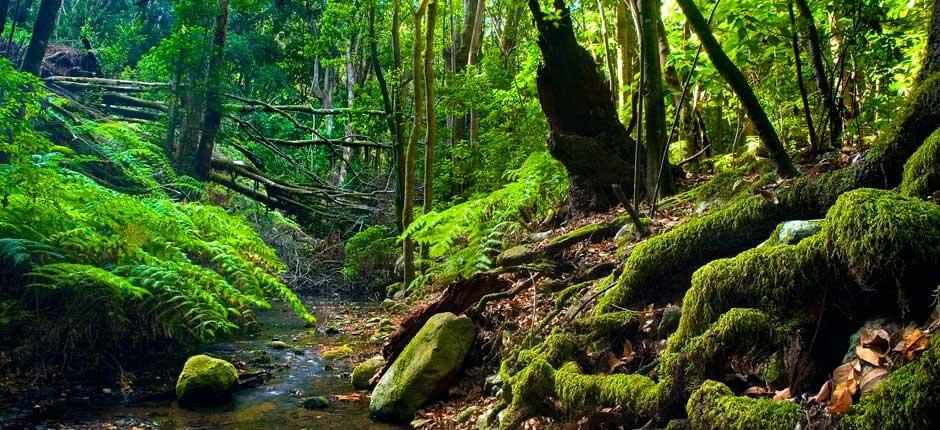

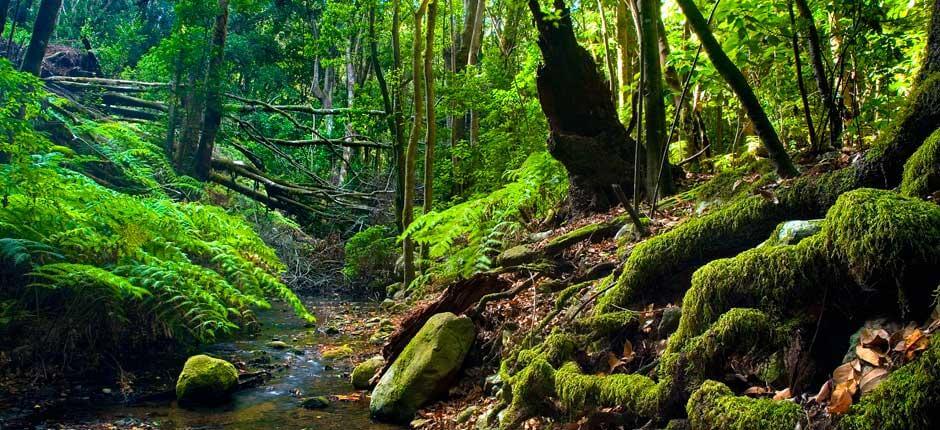
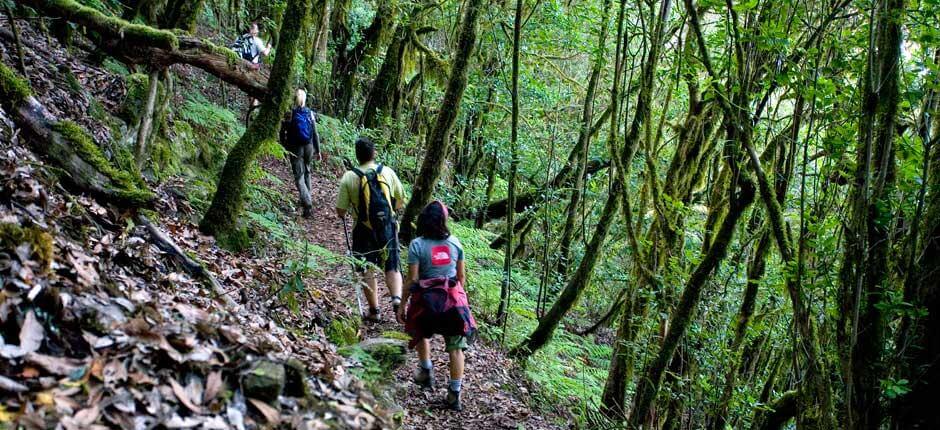

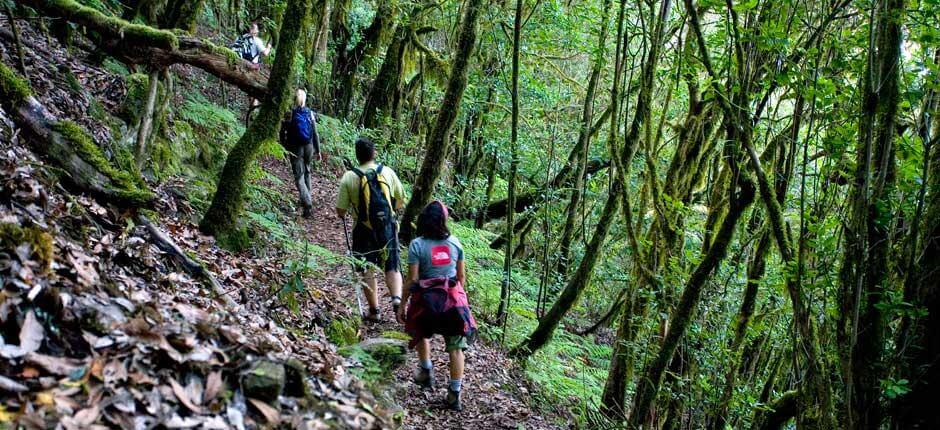
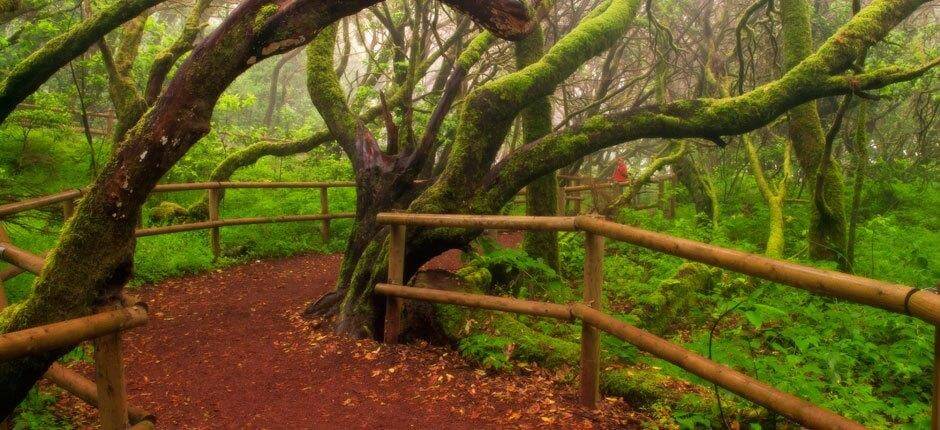

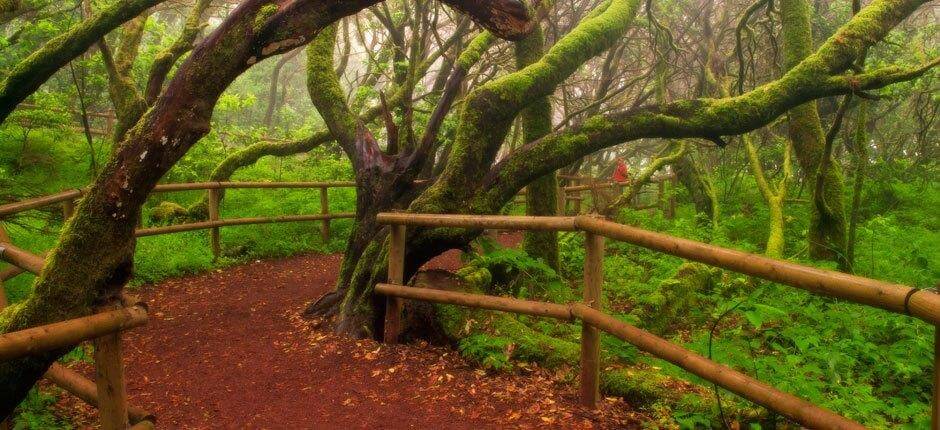



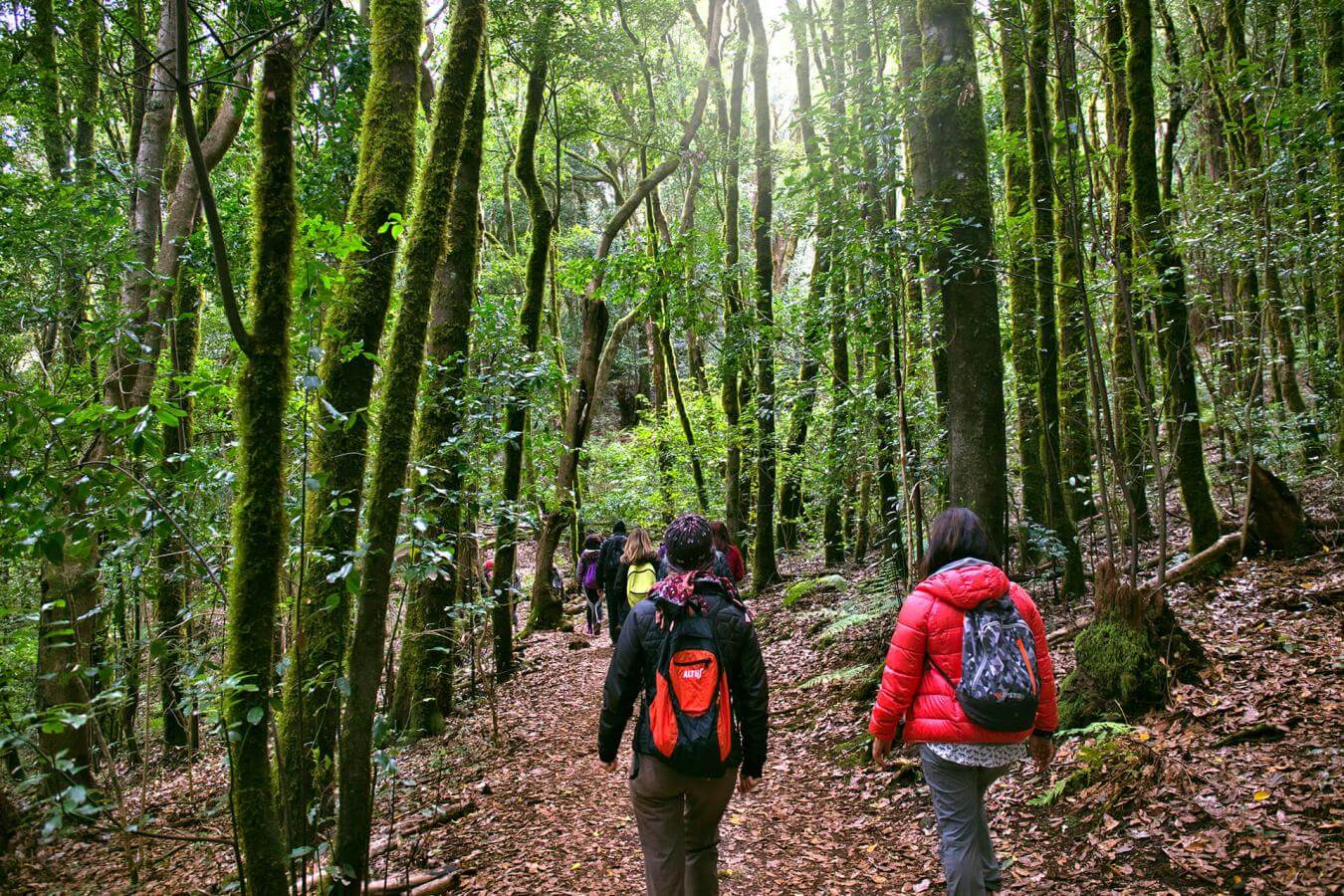

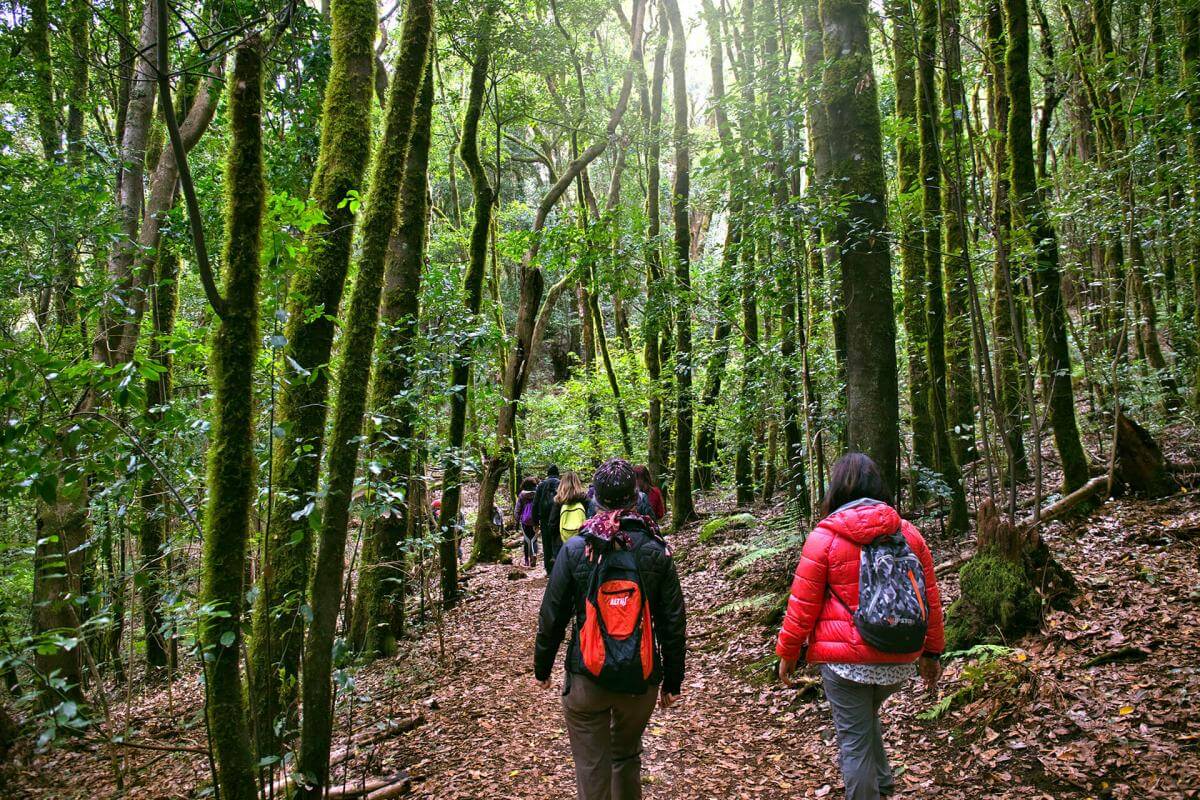
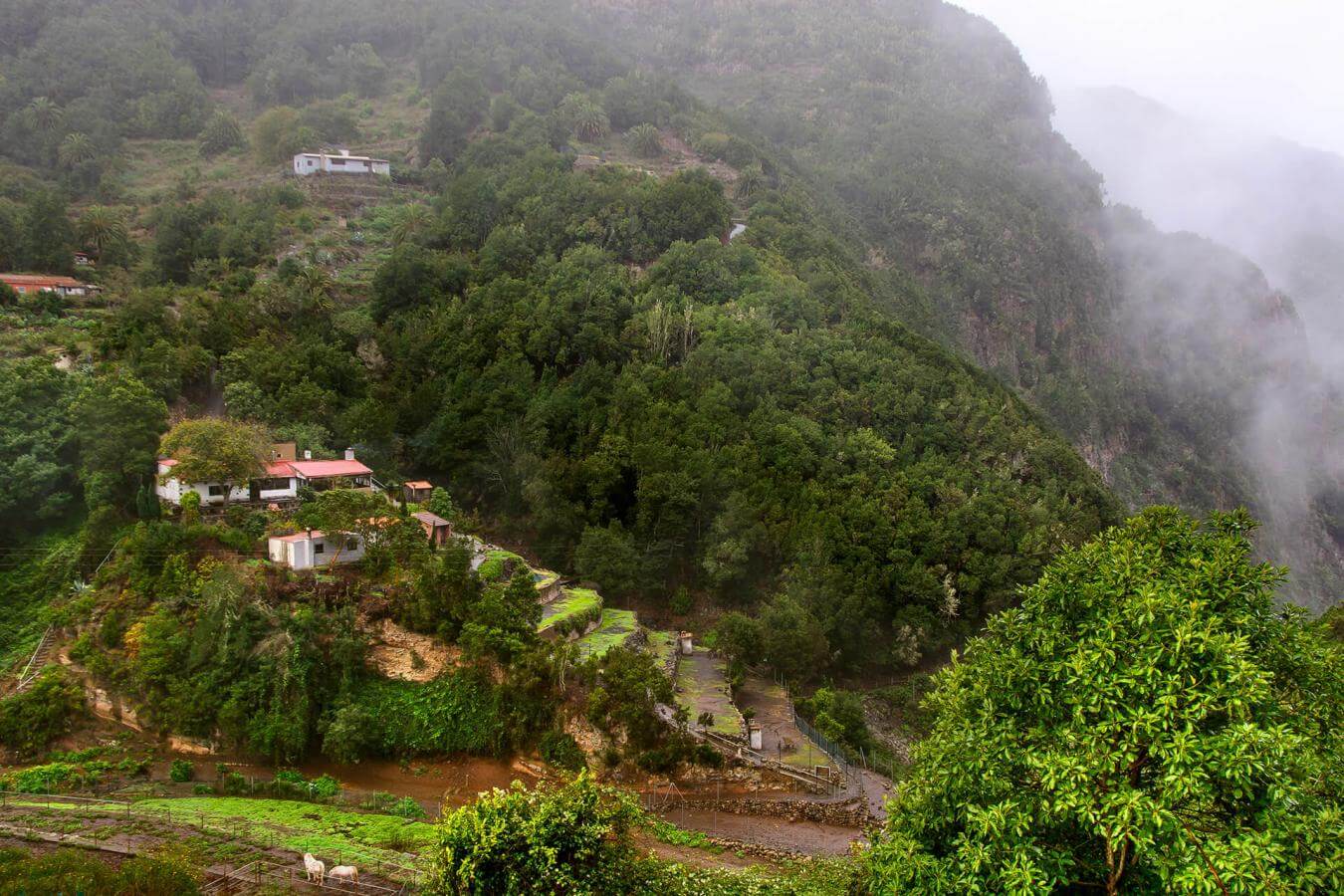

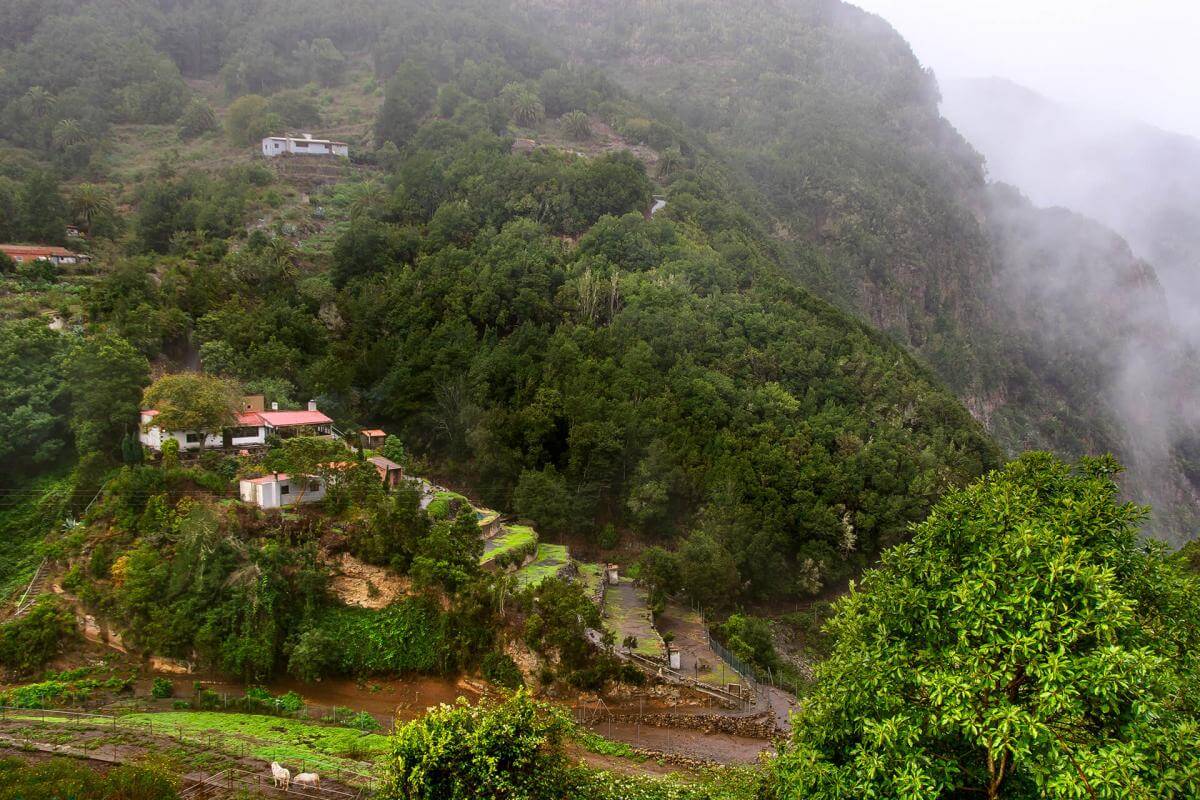


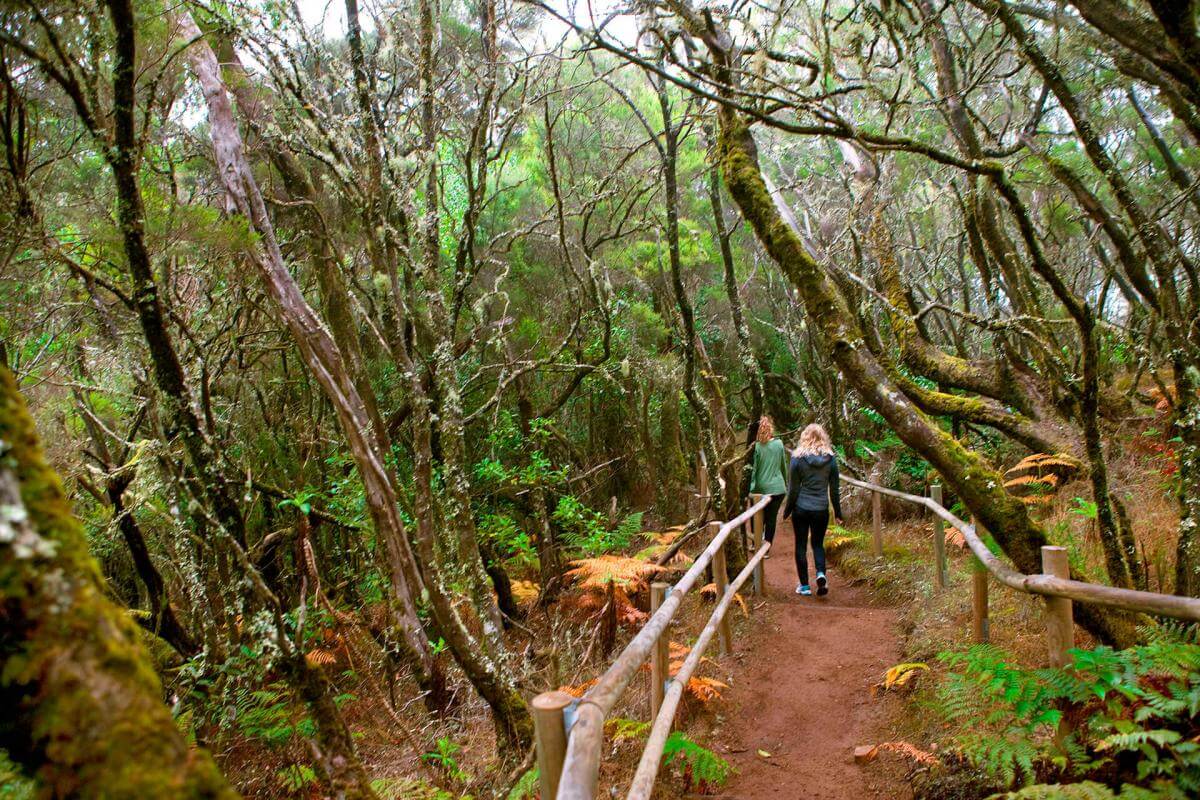
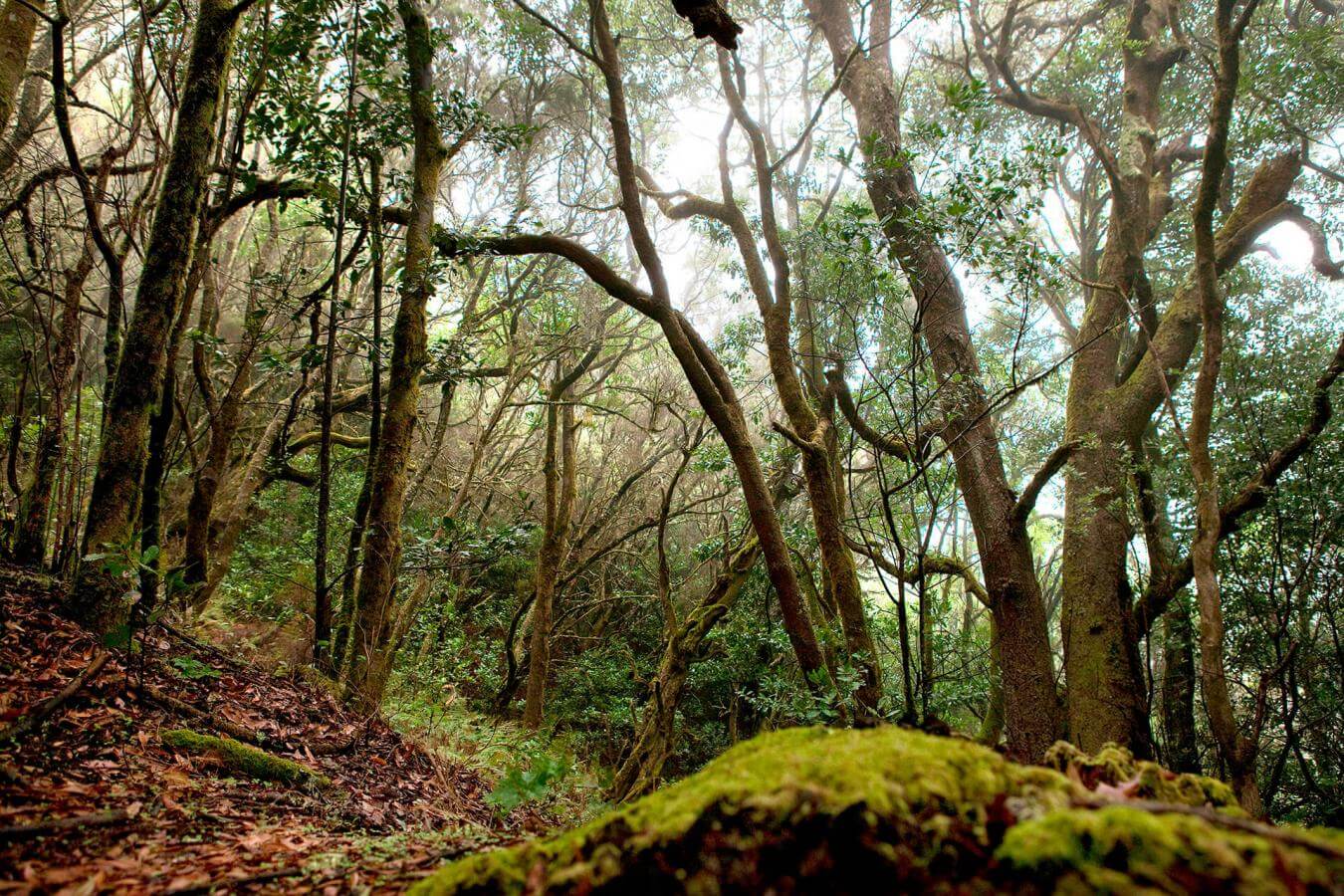

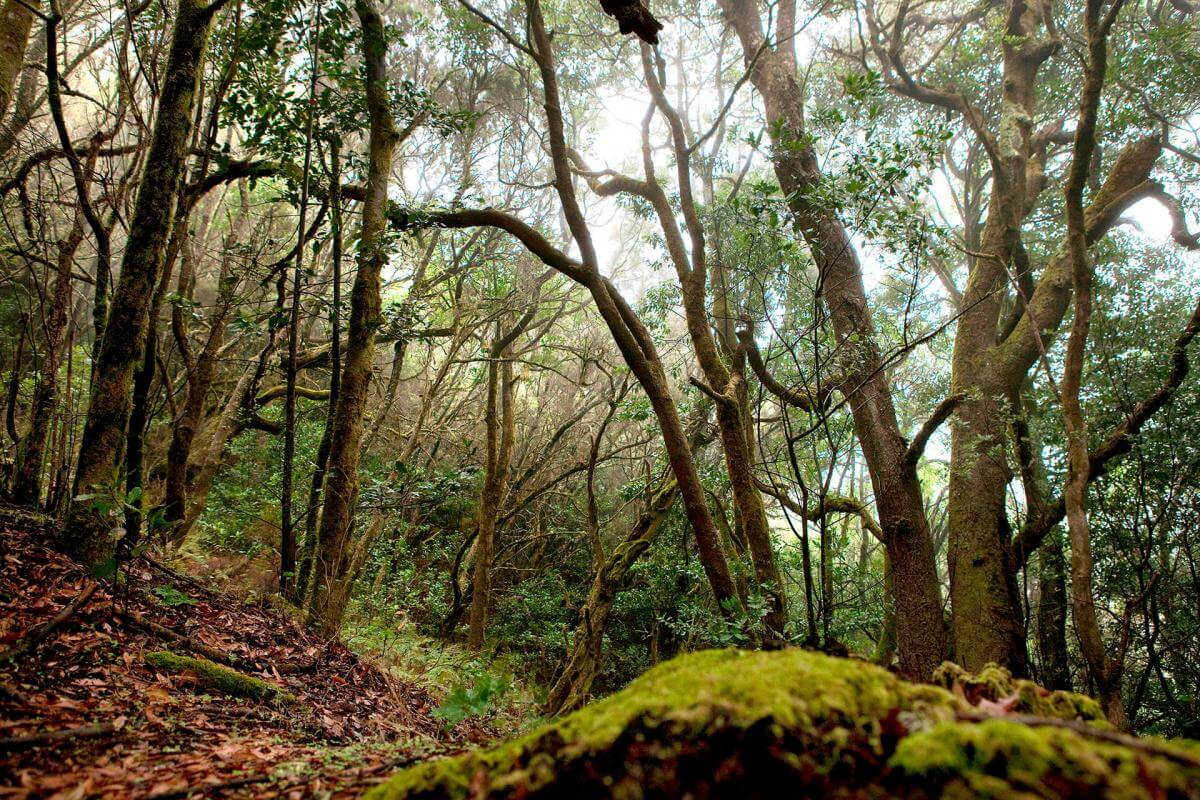
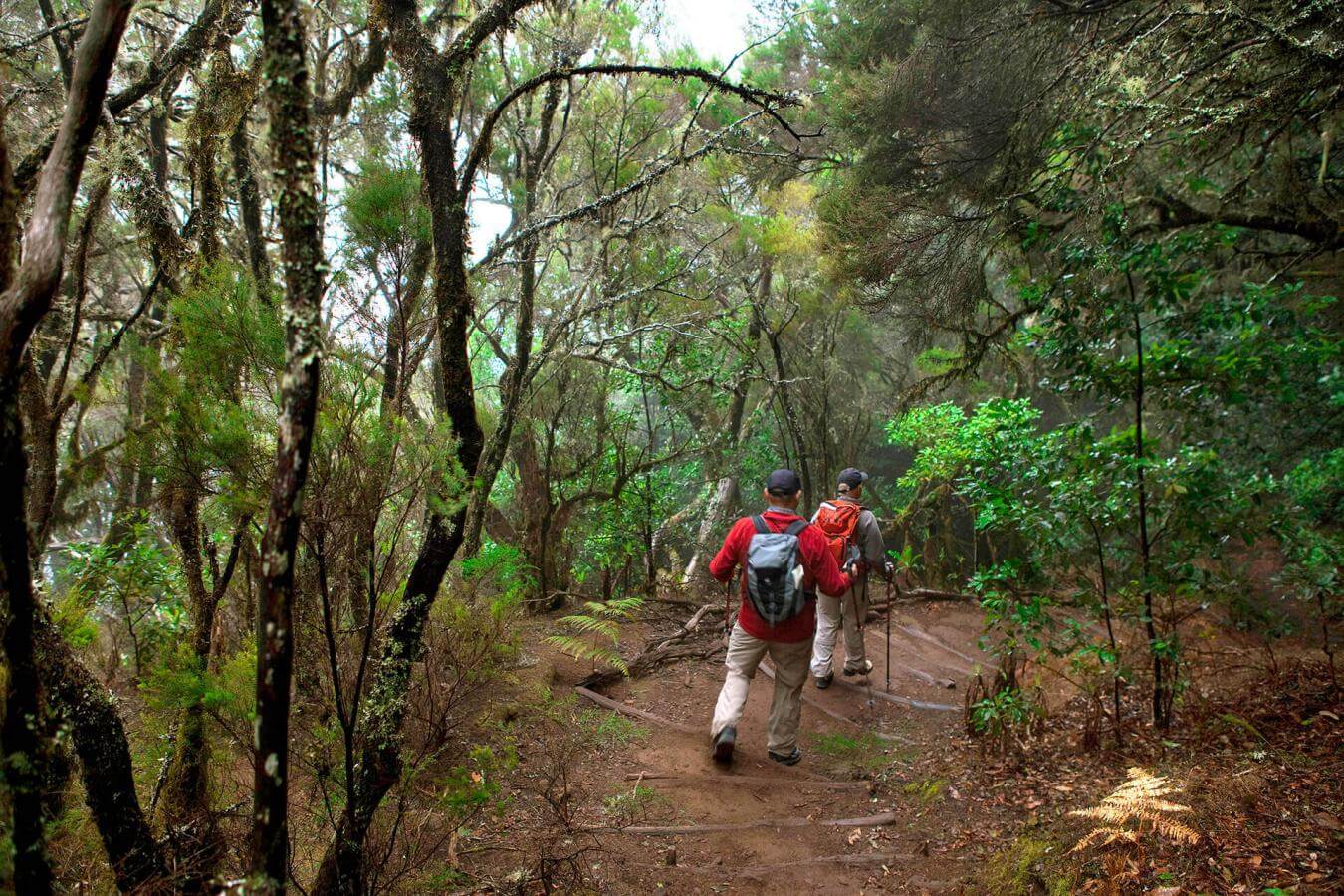

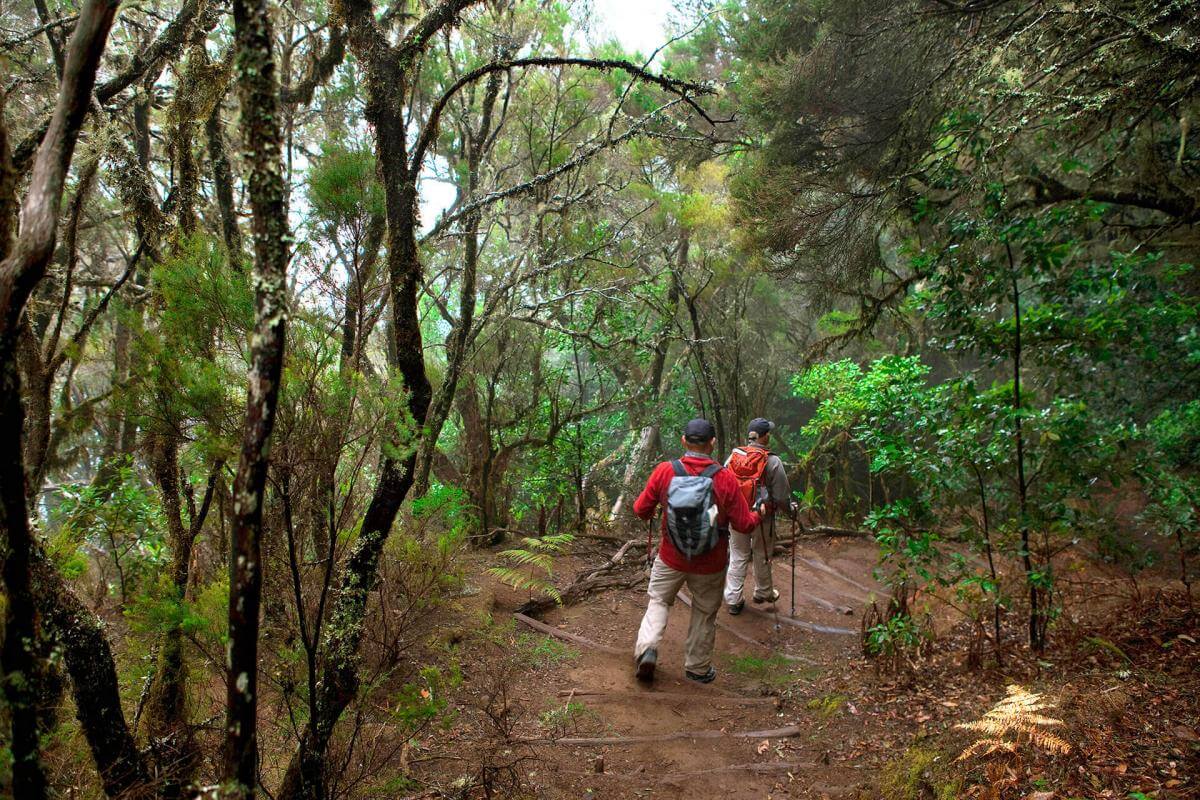
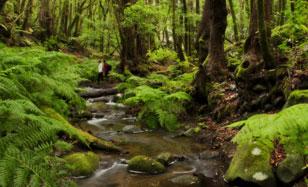
El Cedro Forest
El Cedro Forest is unquestionably the star of the show in the Garajonay National Park and one of the reasons the park was declared a Unesco World Heritage Site in 1986. It is a small section of the vast laurel forest that takes up 85% of the national park. However, El Cedro is unique: an ancient wood, unchanged in centuries, full of history and legend, and crossed by a relaxing stream.
The laurisilva is a forest made up of a large number of different trees, all with similar leaves to the laurel (there are 12 species in El Cedro alone). Within the forest, a microclimate has been created that allows an amazing biodiversity, full of endemic species. Mosses and lichens grow on the branches, and the ground is covered with ferns and leaves of many different colours, which gives the place a prehistoric and mysterious air.
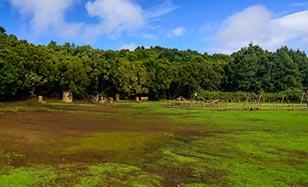
Laguna Grande recreation zone
Laguna Grande is the biggest recreation area in Garajonay National Park and is the perfect setting for a family day out enjoying everything nature has to offer. This large clearing, surrounded by laurel forests, is situated near the Garajonay summit (the highest point of the island at 1,487 above sea level) and just 35 minutes’ drive from the capital, San Sebastián de La Gomera.
The area has an information point with official guides, a playground, toilets, parking and a picnic area with tables, benches and barbecue stands. A low-intensity 900-metre path circles the nearby woods, and in the restaurant beside the recreation area you can sample meat cooked in a fire using local wood as well as dishes made with local honey from Gomeran palm trees.
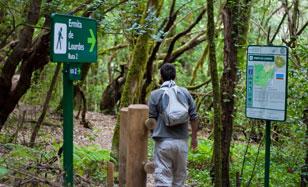
Network of trails in the Garajonay National Park
La Gomera is in island made up of an endless amount of mountains and ravines, which are connected by a myriad of pathways and trails that reach almost all points of the island. From this huge selection of trails the most representative and the ones best designed as tourist rambles have been selected, many of which pass through the centuries-old forests of the national park. Walking along these paths is the most authentic way to experience the real Garajonay.
One of the most popular walks is a 4.8 kilometre ramble from El Contadero to El Cedro, passing by the El Cedro stream and an exuberant, almost magical laurel forest. Others, such as the large circular trail from Pajaritos-El Cedro-Tajaqué-Pajaritos, 12.7 kilometres long, needs expert legs but is the best way to experience the park. You can also reserve a free guided route in the Juego de Bolas visitors centre.

Visitors centre with audiovisuals and exhibitions
Garajonay National Park hides a treasure trove under its foliage of biodiversity, history, traditions and legends. All of these riches are illustrated in the information panels and the audiovisual projections and exhibitions in the Juego de Bolas visitors centre. Located in La Palmita (Agulo), 50 minutes’ drive from San Sebastián de La Gomera, a visit to the centre is obligatory before entering the park itself.
The services on offer are free, including reserving places on routes with official park guides and leaflets for other routes that you can take independently. The intimate relationship Garajonay has with the inhabitants of the island is reflected perfectly in the ethnographic museum and the arts and crafts workshop where visitors can buy pieces that have been made before their eyes.
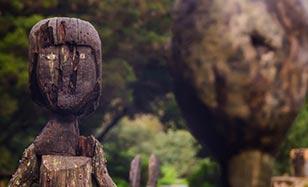
The legend of Gara and Jonay
According to the legend, before the Spanish conquest of the Canary Islands the word ‘Garajonay’ was born from the names of the young Gomeran Princess Gara and the young Tenerife Prince Jonay. Their sad short-lived love story which took place hundreds if not thousands of years ago has curious parallels with Shakespeare’s immortal tale of star-crossed lovers, Romeo and Juliet. Gara and Jonay's story was played out on what is now Garajonay National Park.
According to the story, these two met and fell in love. Following the advice Gara had received from an oracle to avoid fire, when the Teide volcano began to erupt the families separated the lovers due to fear of the prophecy. But Gara and Jonay reunited in La Gomera, escaped to the hills and there, seeing themselves trapped by their families, decided to eternalise their love in a death hug, uniting their hearts in a suicide with a cedar stake through both their hearts.
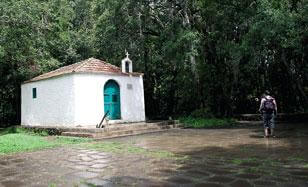
Chapel of Lourdes
The white Chapel of Lourdes and its tiny delicate bell is found in the middle of the dense El Cedro forest along the most emblematic footpath of Garajonay National Park: the walk through the El Cedro Forest. To get to this must-see spot you simply need to walk about 700 metres from the hamlet of El Cedro, near the town of Hermigua in the north of the island.
This captivating spot is the scene for one of the most famous religious processions in the island of La Gomera and its fascinating history is a reflection of the diverse culture that defines the Canary Islands: the chapel was built thanks to money from a British woman who worked in La Gomera as a governess for an Italian family and wanted to erect this sanctuary dedicated to Our Lady of Lourdes, a well-known French dedication.
- Never leave waste of any type lying around, including cigarette butts. Leftover food leads to a proliferation of rats and wild cats, which pose a serious threat to the fauna.
- Respect the animals. Do not bother them or feed them. If you see an injured specimen, you can call the emergency number: 112. Do not pick flowers or plants.
- Do not pick up or take away stones or any other item from the natural environment. And do not move them to pile them up into sadly famous 'towers'.
- Do not walk in areas where it is not allowed and respect the signposting along trails. Leaving the set paths causes damage to the environment and could also be dangerous for you and anyone with you.
- Do not light fires outside the permitted areas and be especially careful during the summer months.
- Try not to alter the peace of the environment with excessive noise (loud music, yelling, etc.).



